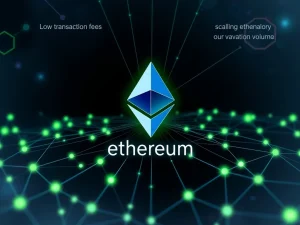Ethereum Pectra Upgrade Brings Exciting Breakthroughs Today

The Ethereum network, a cornerstone of the decentralized world, is set for its next major evolution with the **Ethereum Pectra upgrade** going live today. This anticipated network update promises significant changes, aiming to improve user experience, simplify operations for stakers, and boost overall network capacity. But what exactly does this mean for users, developers, and the ecosystem at large?
Understanding the Ethereum Pectra Upgrade
The Pectra upgrade, short for ‘Prague’ and ‘Electra’, is scheduled to activate on the Ethereum mainnet at epoch 364032, around 10:00 am UTC on May 7, 2025. It bundles several Ethereum Improvement Proposals (EIPs), each targeting specific areas of the network. The most discussed EIPs include:
- **EIP-7702:** Enables externally owned accounts (EOAs) to temporarily function like smart contracts within a transaction. This opens the door for paying gas fees with tokens other than ETH and executing multiple operations in a single transaction.
- **EIP-7251:** Increases the maximum effective balance for validators from 32 ETH to 2,048 ETH. This simplifies staking operations for large stakers and institutions by reducing the number of validators they need to manage.
- **EIP-7691:** Aims to increase the number of data blobs per block, which is crucial for improving layer-2 scalability and potentially lowering transaction costs on rollups.
Sergej Kunz, co-founder of 1inch, notes that Pectra introduces ‘smart account’ features at a deeper protocol level and improves scalability via layer-2 solutions.
Ethereum Smart Accounts: A Step Towards Simpler UX?
One of the most significant changes is the advancement towards **Ethereum smart accounts** functionality, primarily through EIP-7702. Currently, achieving a Web2-like user experience (UX) on Ethereum is challenging, partly due to the need for switching wallets or multiple transaction approvals.
0xAw, lead developer at Base DEX Alien.Base, sees EIP-7702 as a potentially great addition. Account abstraction features, previously hard to implement widely, become more accessible for developers. Benefits could include:
- Eliminating repetitive approval flows.
- Reducing the need to sign each individual transaction.
- Allowing segregated permissions for increased security.
- Enabling automated actions on behalf of the user.
Ivo Georgiev, CEO of Ambire, highlights that users might no longer need native ETH to pay gas fees for certain transactions and that infinite ERC-20 approvals could become a thing of the past. This change could lead to a complete rework of wallet UX, making interactions smoother and potentially more secure by allowing more limited permissions for dApps.
However, the move is not without potential risks. Mike Tiutin, CTO at PureFi, warns that EIP-7702 could expand the scope of malicious signing attacks. While drainers currently trick users into signing approvals for single tokens, this new capability could potentially allow a single malicious signature to affect the entire wallet if not handled carefully. Georgiev remains optimistic, believing the industry has the knowledge to implement secure contracts for EIP-7702 delegation.
Boosting Ethereum Staking Limits
The increase in the validator effective balance via **Ethereum staking limit** EIP-7251 is a major win for larger stakers, especially institutions. Managing thousands of validators at the 32 ETH limit is complex and resource-intensive.
Artemiy Parshakov, VP of Institutions at P2P.org, states that EIP-7251 makes institutional staking much easier to integrate with reduced risk. Previously, exiting staking required a signed message from the staking service provider, which had to be stored securely and could only be generated about 13 hours after staking began. Pectra is expected to decrease this exit delay significantly, potentially down to about 13 minutes, streamlining the process.
Enhancing Ethereum Scalability with EIPs
Scalability remains a key focus for Ethereum. EIP-7691, by increasing data blobs per block, directly benefits layer-2 solutions like rollups. More data blobs mean more space for rollup transaction data on the mainnet, which can lead to lower transaction fees and higher throughput on these layer-2 networks. This is a crucial step in Ethereum’s strategy to scale the network by offloading transactions to layer-2s while maintaining security via the mainnet.
Another notable inclusion is EIP-6110, which improves how new validator deposits are handled. It ensures that execution-layer blocks carry data about new validator deposits directly to the consensus layer. This change, while technical, is important for the robustness and reliability of the staking protocol, especially following client bugs seen on testnets.
Conclusion: A Transformative Step for Ethereum
The **Ethereum Pectra upgrade** represents a significant step forward for the network. By introducing features like temporary smart account functionality (EIP-7702), increasing the staking limit (EIP-7251), and enhancing data availability for layer-2s (EIP-7691), Pectra aims to make Ethereum more user-friendly, more efficient for large stakers, and more scalable overall. While the introduction of new capabilities like EIP-7702 requires careful implementation to mitigate potential risks, the potential benefits in terms of improved UX and developer flexibility are substantial. This upgrade continues Ethereum’s journey towards becoming a more accessible, efficient, and powerful platform for decentralized applications and finance.









